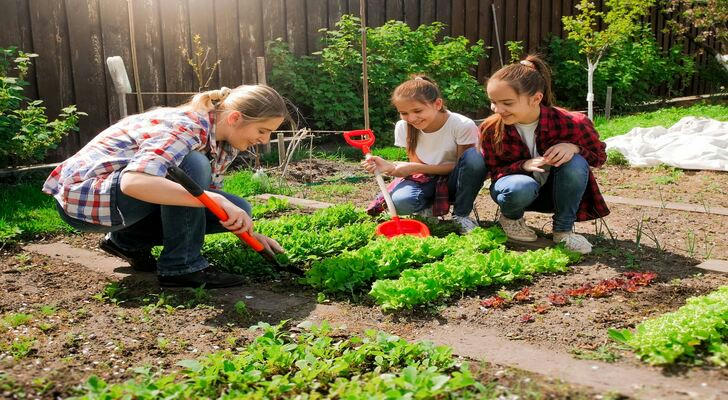How to Create a Stress-Free Garden for Relaxation and Meditation

A garden is more than just a collection of plants; it can be a peaceful retreat where relaxation, meditation, and stress relief become natural parts of daily life. With the increasing pace of modern living, creating a stress-free garden is a powerful way to reconnect with nature and find inner peace. Whether it's a small balcony or a spacious backyard, turning your outdoor space into a calm sanctuary can provide numerous benefits for mental and physical well-being.
Here are some practical tips on creating a serene garden space that fosters tranquility, reduces stress, and enhances relaxation
1: Choose the Right Location.
The first step in crafting a peaceful garden is selecting the right location. Ideally, it should be a quiet, secluded spot, away from the noise of traffic or other distractions. Even small gardens can be turned into calming spaces if placed in the right environment.
- Why Location Matters:
According to a study published in Environmental Science & Technology, spending as little as 20 minutes in a peaceful garden can reduce cortisol levels, the primary stress hormone, and improve mood.
- Tips for Selecting the Right Spot:
If the garden is small, try to place it near a window where it can be enjoyed from inside. For larger gardens, aim for a corner or area with minimal external noise.
2: Incorporate Natural Elements.
Natural elements are key to creating a tranquil garden. Water features, such as small fountains or ponds, are excellent additions that can promote relaxation through sound. The gentle trickling of water has been shown to have calming effects on the mind.
- Why Natural Elements Work:
A study published in The Journal of Environmental Psychology found that people exposed to natural elements, like water or greenery, reported lower levels of stress and greater feelings of peace and well-being.
- Tips for Adding Natural Elements:
• Install a small fountain or birdbath to create a peaceful ambiance. The sound of flowing water can drown out urban noise and provide a natural rhythm for relaxation.
• Adding stone pathways or using natural stones in the landscape adds texture and helps ground the space.

3: Design with Calming Colors.
Color can have a profound impact on how one feels in a space. Soft, earthy tones, as well as colors like green, blue, and lavender, are known to promote feelings of peace and tranquility.
- Why Color Matters:
Research from Color Psychology suggests that blue and green hues are especially calming, with green being the color most associated with nature and healing. These colors also help to lower heart rates and induce relaxation.
- Tips for Using Color:
• Incorporate greenery into the design through plants and shrubs, which naturally promote calm.
• Add blue flowers, like lavender or delphinium, for a pop of color that’s soothing to the eyes.
• Keep hardscape elements, such as furniture or stones, in neutral or muted colors to avoid overwhelming the senses.
4: Use Fragrant Plants for Aromatherapy.
Fragrance plays a big role in creating a relaxing atmosphere. Certain plants can provide calming aromas that help relieve stress and anxiety.
- Why Scent Is Important:
According to research published in the Journal of Clinical Psychology, aromatherapy has been shown to reduce anxiety and improve mood. Scented plants in the garden provide natural stress relief.
- Tips for Choosing Fragrant Plants:
• Lavender: Known for its calming properties, it’s perfect for a meditation or relaxation space.
• Jasmine: Another sweet-smelling flower that promotes calm and restful sleep.
• Rosemary: A fragrant herb that not only smells great but also has stress-reducing benefits.
5: Create Quiet Spaces for Reflection.
A dedicated area for reflection and meditation is essential in a stress-free garden. A comfortable bench, cushion, or hammock can serve as the perfect retreat. This space should invite stillness and quiet, making it easy to engage in mindfulness or simply enjoy a few moments of peace.
- Why Quiet Spaces Work:
Research from Psychology Today shows that solitude and quiet reflection help clear the mind, reduce stress, and encourage mindfulness—important practices for mental well-being.
- Tips for Creating a Meditation Nook:
• Choose comfortable seating like a hammock, meditation cushion, or a cozy outdoor chair.
• Surround the space with low-maintenance plants, such as ferns or peace lilies, which offer natural beauty without being overwhelming.
• Keep the space uncluttered to promote calmness.

6: Incorporate Soft Lighting for Evening Relaxation.
Soft lighting can significantly alter the atmosphere of the garden, making it more inviting as the sun sets. Lighting creates a serene ambiance that encourages relaxation, especially in the evening when you want to unwind.
- Why Lighting Is Important:
Studies show that warm, soft lighting has a calming effect and can help lower cortisol levels. It’s an ideal way to set the mood for evening meditation or relaxation.
- Tips for Lighting Your Garden:
• Use solar-powered lights or string lights to create a cozy, gentle glow.
• Focus the lighting on key features, such as pathways, water features, or the seating area, to draw attention to peaceful spots.
7: Keep the Design Simple and Minimalistic.
Less is more when it comes to creating a stress-free garden. A cluttered, overdecorated space can create a sense of chaos rather than calm. Instead, focus on simplicity and balance in the design.
- Why Simplicity Matters:
A study from The Journal of Environmental Psychology found that simple, uncluttered environments help reduce feelings of anxiety and promote a sense of order and relaxation.
- Tips for a Minimalistic Garden:
• Limit the number of decorative items to a few key pieces, such as a stone statue or a bamboo fountain.
• Keep the layout clean with well-placed pathways, neat plantings, and spaces for contemplation.
Conclusion.
Creating a stress-free garden is about more than just planting flowers—it's about designing a space that promotes peace, relaxation, and mindfulness. By incorporating natural elements like water features, calming colors, and fragrant plants, you can transform your garden into a serene oasis. Whether for meditation, relaxation, or simply a break from daily stress, a tranquil garden offers numerous benefits for both body and mind.
With careful planning and thoughtful choices, anyone can create an outdoor space that fosters inner peace and well-being—one that invites you to slow down, take a deep breath, and enjoy the present moment.
